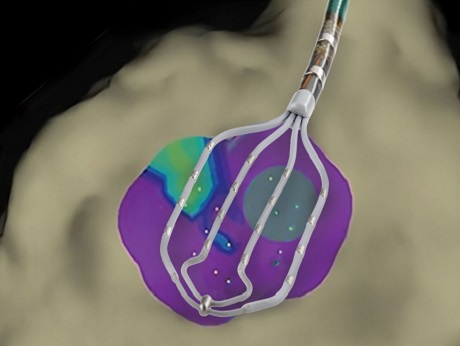
Mumbai, June 12, 2019: Global healthcare leader, Abbott, has launched its sensor enabled HD grid mapping catheter in India.
It helps create high density maps of the heart, thus supporting optimal treatment for patients with complex cardiac arrhythmias.
The product received USFDA clearance last year in May. The catheter employs a new design that allows physicians to see things differently, capturing and analyzing data in a novel manner to create highly detailed maps of the heart that better differentiate healthy from unhealthy tissue.
Arrhythmias are abnormal heart rhythms caused by improperly conducted electrical signals in the heart. Abnormal heart rhythms, which include conditions such as atrial fibrillation, make the heart beat too fast, too slow or out of sync. In each case, the heart may pump blood less effectively which can cause a range of symptoms that disrupt a patient's quality of life. In some cases, cardiac arrhythmias can damage the heart or cause blood clots, strokes or cardiac arrest.
For people battling complex arrhythmias, physicians may use cardiac ablation therapy to create lesions on the heart to disrupt the electrical pathways causing the erratic heart beats. To ensure the best outcomes for their patients, physicians first need to identify which areas of the heart contain those pathways. Mapping catheters are critical to providing this insight — delivering an inside view of the heart so physicians can navigate cardiac anatomy to deliver more precise ablation therapy.
The new catheter from Abbott is designed to capture information — such as the direction and speed of cardiac signals — often missed with traditional mapping catheters. It offers physicians a unique grid configuration that captures this critical information and enables the creation of high-density maps of cardiac tissue to support optimal treatment for patients. With this grid mapping catheter, for the first-time physicians can see electrical signals that they may have missed using standard mapping catheters.
"It is very important to better understand and redefine arrhythmia mechanisms with higher resolution cardiac mapping. This catheter represents an important step in the development of next generation mapping catheters. With a flexible and soft design using high density, closely spaced grid configuration and magnetic sensor technology, the catheter helps capture signals previous catheters may have missed to support the creation of highly detailed 3D maps of the heart," said Dr Eric T.S. Lim, Consultant Electrophysiology and General Cardiology at the National Heart center, Singapore, on a visit to India.
Dr Balbir Singh, Chairman Interventional Cardiology and Chairman Electrophysiology & Pacing, Medanta, the Medicity Hospital, Gurgaon adds, "Innovation within the field of electrophysiology continues to evolve toward improving our ability to visualize arrhythmias in much greater detail, and we are confident that patient outcomes will improve as a result."
Dr. Ulhas M. Pandurangi, Chief - Cardiac Electrophysiology and Pacing, The Madras Medical Mission, Chennai says, "Innovation within the field of electrophysiology is essential. Unique mapping technology offers the opportunity to discover issues not otherwise visible. This leads to more accurate mapping of the heart, thereby enabling more effective therapy."